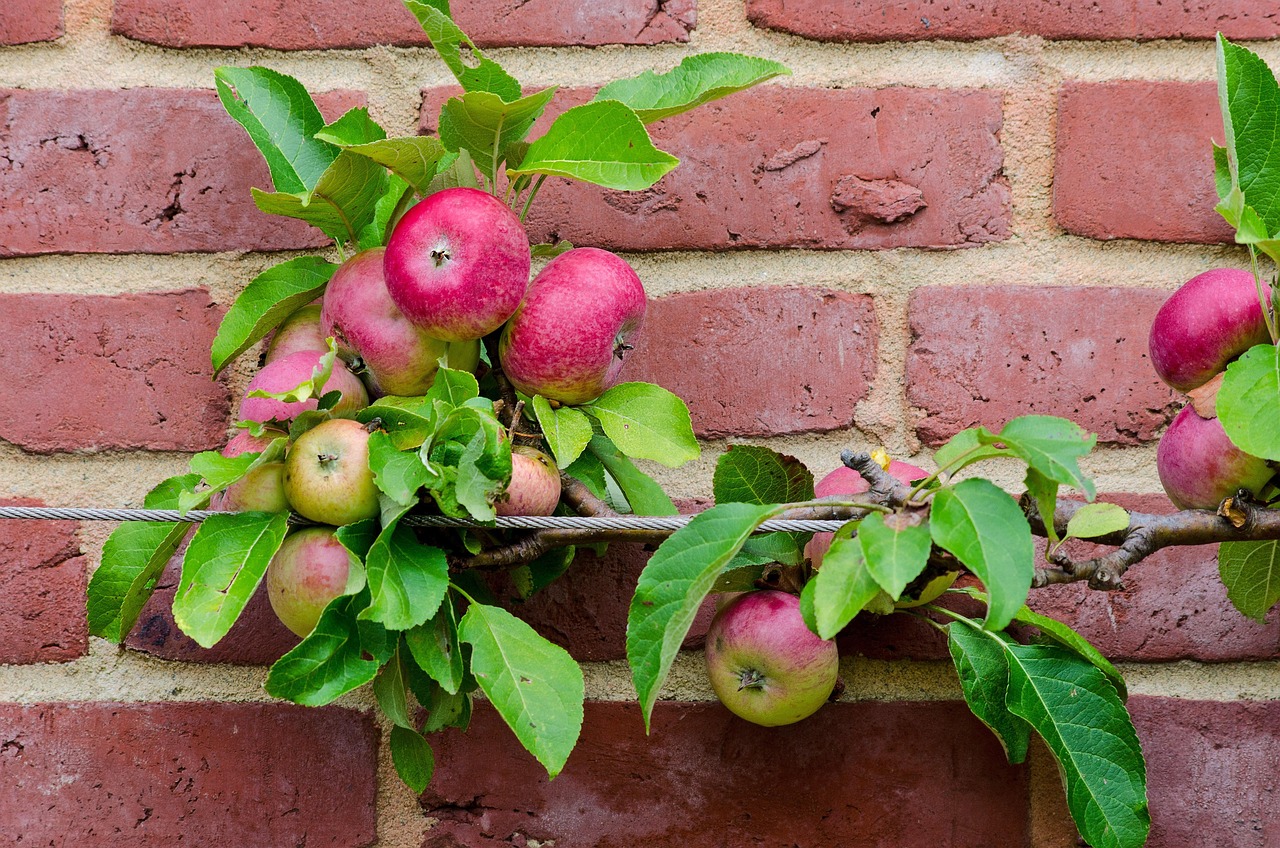Espaliering is an elegant solution for gardeners with limited space who still dream of harvesting their own fresh fruit. This centuries-old technique involves training fruit trees to grow flat against a wall or fence in decorative patterns, transforming ordinary trees into living sculptures. Beyond their aesthetic appeal, espalier fruit trees take up minimal ground space while still producing abundant harvests. This guide will walk you through selecting appropriate trees, creating support structures, mastering artistic tree pruning techniques, and maintaining your espalier for years of beauty and bounty.
Understanding the Art of Espaliering
The practice of training fruit trees espalier style dates back to ancient Roman times and was perfected in European monastery gardens during the Middle Ages. The word “espalier” refers both to the training method and to the plant that undergoes this specialized pruning. While many gardeners are intimidated by the apparent complexity of growing fruit in small spaces through espalier methods, the technique is actually quite approachable with some patience and consistent care. The artistic aspect of espalier comes from the intentional design patterns—horizontal cordons, candelabras, fans, or Belgian fences—that not only look beautiful but also optimize fruit production by maximizing sun exposure to all branches.
Choosing the Right Trees for Your Espalier Project
Not all fruit trees are equally suited to the espalier method, though many can adapt with proper training. Apples and pears are traditionally considered ideal candidates for wall-mounted fruit trees due to their flexible branches and spur-bearing fruit production. When selecting trees, opt for dwarf or semi-dwarf rootstock varieties as they naturally maintain a smaller size. For apples, varieties like ‘Liberty’, ‘Honeycrisp’, and ‘Gala’ respond well to espalier training. Among pears, ‘Bartlett’, ‘Bosc’, and ‘Anjou’ are excellent choices. Other fruits that can be espaliered include peaches, plums, cherries, and even figs, though these may require slightly different approaches to training and pruning.
Creating the Perfect Support Structure
Before planting your fruit tree, you’ll need to establish a robust support system. The most common approach for training fruit trees espalier style involves installing a series of horizontal wires between posts or directly on an existing wall or fence. For freestanding espaliers, set sturdy posts at least 8 feet apart and stretch galvanized wire between them at 12-18 inch vertical intervals. When mounting against a wall, use eye hooks screwed into the wall or fence and then thread the wire through them, maintaining tension with turnbuckles. Position your support structure in a location that receives at least six hours of direct sunlight daily and offers protection from harsh winds. The wall itself can provide additional benefits by absorbing heat during the day and radiating it at night, potentially extending your growing season.
Planting and Initial Training Techniques
Plant your tree about 8-12 inches away from the wall or support structure to allow for air circulation and root expansion. The best time for planting is during the dormant season—late fall or early spring. When implementing your espalier fruit trees guide in practice, begin training immediately after planting. Select a central leader (main trunk) and identify branches that will form your desired pattern. For beginners, the horizontal cordon (with branches extending straight out to the sides in tiers) is often the easiest to manage. Remove any branches that don’t fit your design plan, and gently bend the remaining branches to follow your support wires. Secure them with soft plant ties or strips of cloth, being careful not to damage the bark. This initial training sets the foundation for your living sculpture.
Mastering Artistic Tree Pruning Techniques
The artistry in espaliering comes from consistent and thoughtful pruning. During the growing season, you’ll need to prune regularly to maintain your chosen form and encourage fruit production. Summer pruning helps control size and shape by removing unwanted new growth and water sprouts (vertical shoots). Winter pruning, performed during dormancy, focuses on structural modifications and thinning to improve air circulation. As fruit spurs develop along your horizontal branches, you may need to thin them to prevent overcrowding. Finding the right balance with your artistic tree pruning techniques takes practice—if you’re uncertain, consider consulting with pruning experts on AskHomey who can provide personalized advice for your specific espalier project.
Ongoing Maintenance and Harvesting
Maintaining your espalier requires regular attention throughout the year. Beyond pruning, monitor for pests and diseases, which can spread quickly in the confined growing pattern. Apply appropriate fertilizer in spring to support healthy growth, but avoid excessive nitrogen which promotes leafy growth at the expense of fruit production. Water consistently, especially during dry periods, as wall-mounted fruit trees may receive less natural rainfall. The reward for your diligence comes in the form of easier harvesting—with fruit growing along a two-dimensional plane, picking is simpler than reaching into a full-sized tree. Most espalier fruit trees begin producing significant harvests within 3-5 years after planting, though some fruit may appear earlier.
Seasonal Considerations for Espalier Care
Each season brings different requirements for espalier maintenance. In spring, apply compost around the base of the tree and monitor for early pest issues. Summer requires vigilance against drought stress and continual shaping of new growth. Fall is the time to harvest your fruit and prepare the tree for winter by removing any remaining fruit and cleaning up fallen leaves that might harbor disease. Winter presents the opportunity for major structural pruning while the tree is dormant. This rhythmic cycle of care creates a deeper connection between gardener and plant, transforming the technical aspects of growing fruit in small spaces into a rewarding seasonal ritual.
For more tips and to connect with reliable home service professionals, follow AskHomey on Facebook and Instagram.



